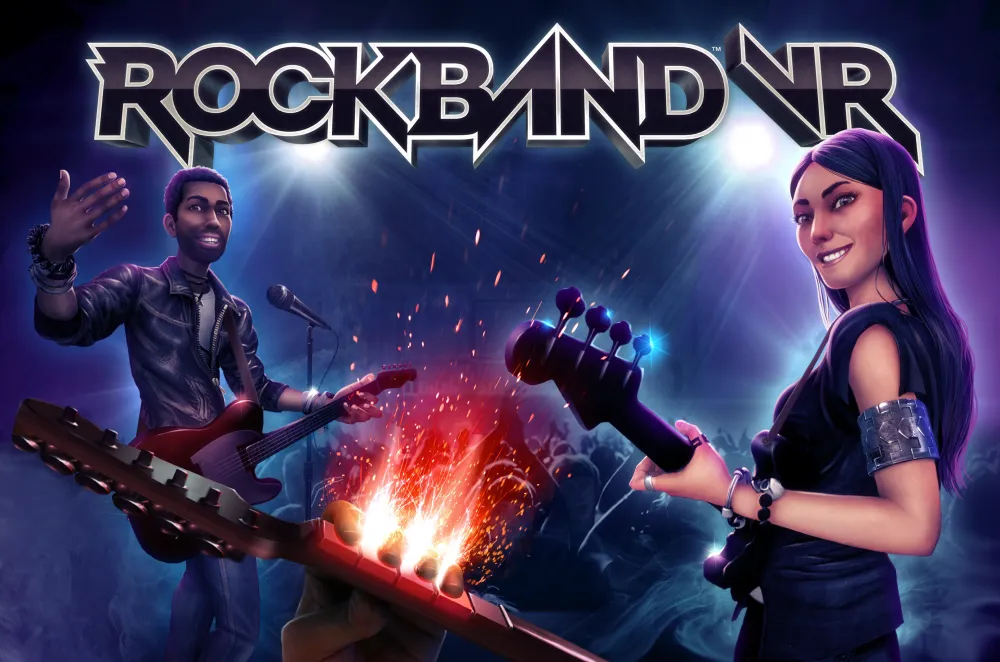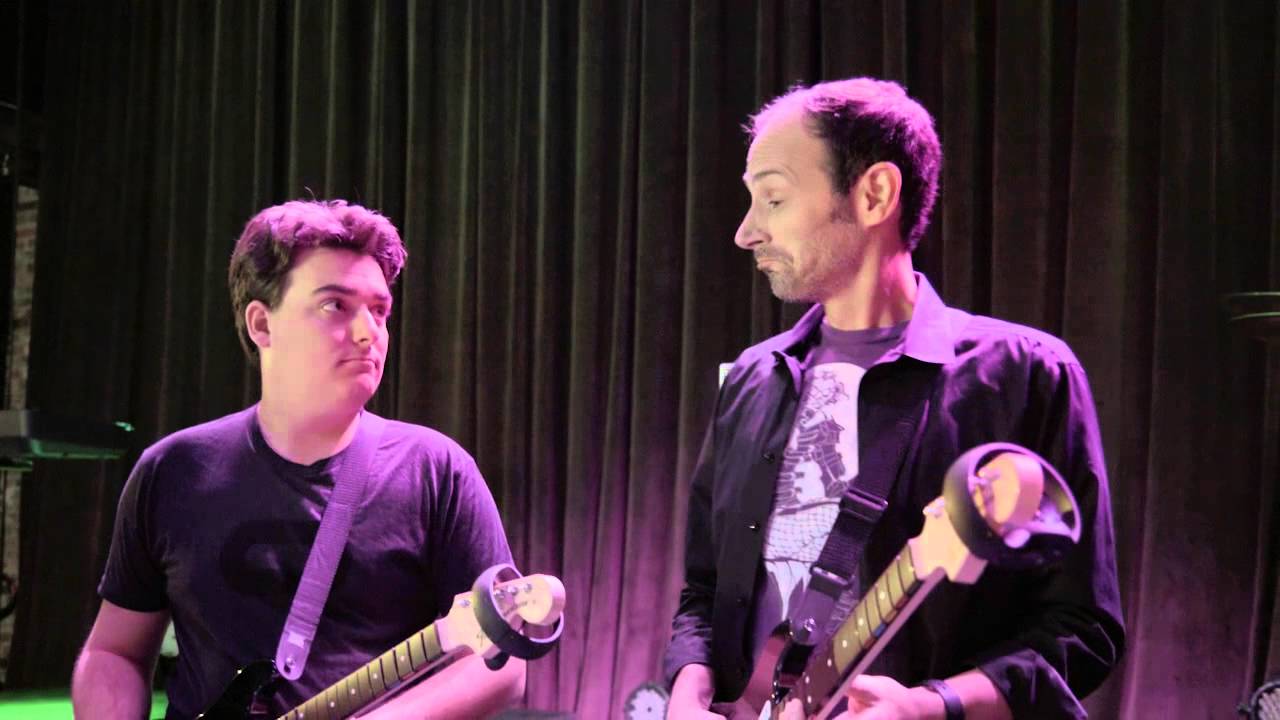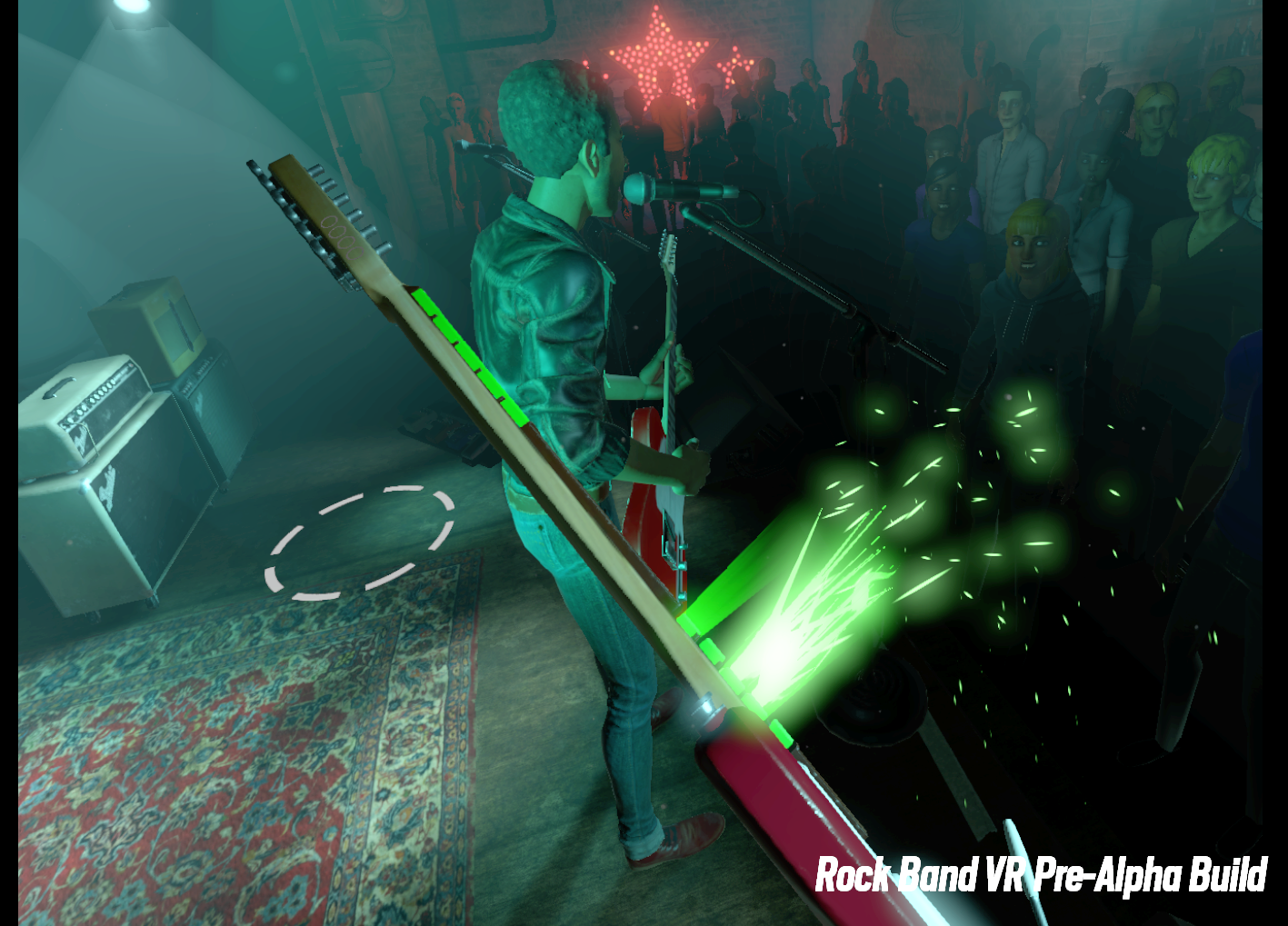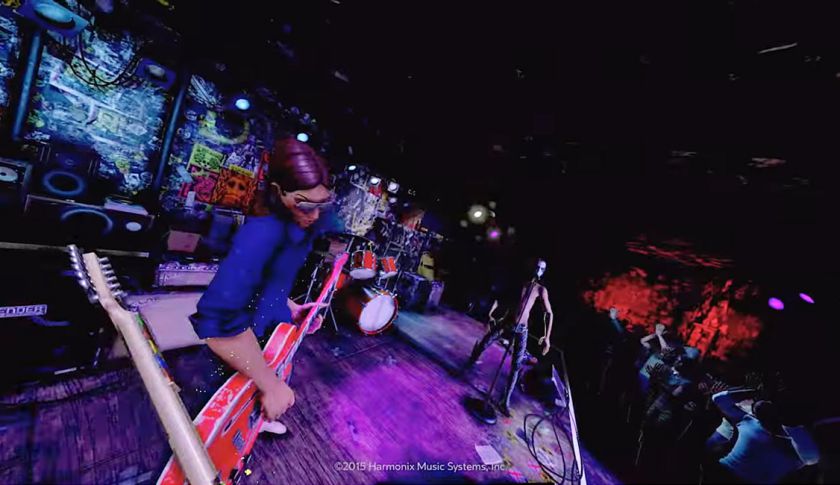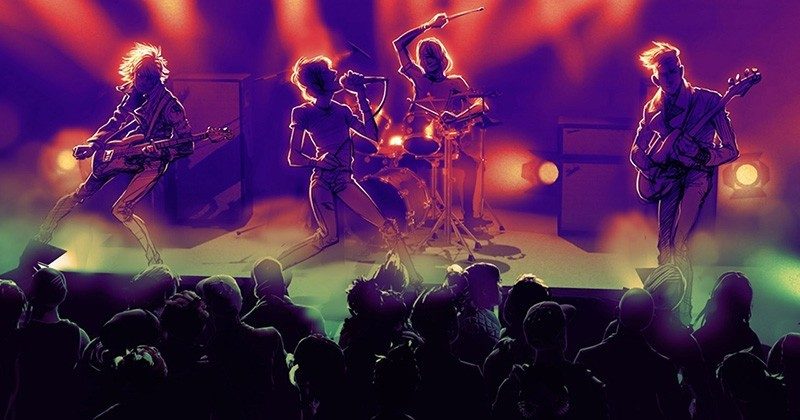The more “punk” years of my life are a fickle memory; less so a protest aimed at the establishment and more at my parents. But one minor point of pride I’ll always be able to keep is my time spent playing music with friends, and actually performing it live. It’s impossible to disassociate my youth with the pop-punk anthems I crooned, the basement gigs we trashed, or the girl I definitely thought I could impress with a new hardcore song. Yes, we were that kind of (godforsaken) act. But we loved every second of it.
And as much as the Rock Band series has always been about getting your friends together and slogging your way through your favorite anthems, Rock Band VR is decidedly grasping onto a different sort of fantasy: The nights spent shouting into a hairbrush in the tentative privacy of your bedroom, unplugging the guitar peripheral and going positively ape.
And I loved it.
At PAX West Harmonix and Oculus Events, players were able to get a feel for just how the Rock Band experience might work in an immersive virtual setting.
Most significantly, Harmonix developers acknowledged that Rock Band’s mechanics would need to be revamped to make the experience work in VR. The traditional descending note grid, which was featured at our previous GDC demo of the game, only detracts from the experience of looking out in a crowd while you bust out a solo. It breaks the immersion.
To make up for this, Harmonix has completely rebuilt Rock Band’s gameplay loop for VR. Rather than scoring points for note accuracy, players must pay attention to prompts presented both visually and through vibration feedback on the neck of the virtual guitar. These prompts let players know which chords to strike, but it’s completely up to the player how often and aggressively they strike those chords or notes.
Not only is the player freed up to gaze out into the crowd, they’re also able to put their own personal twist on the classics. In both Bowie’s “Suffragette City” and The Killers’ “When You Were Young,” I was able to put my own rapid, punk-leaning influence onto melodies that most certainly weren’t.
Like many things in the world of virtual reality, it’s difficult to explain while separated from the experience itself. Even while watching another player, it may not come across that the Oculus Touch remote attached to the Rock Band VR controller is doing more than just identifying where you’re currently slinging your axe. It’s actually vibrating in time with the prompts, allowing you to focus on the thrill of staring out into the crowd, rather than memorizing specific chord progressions.
Ample warning is given before each chord change, so it never felt like I was blundering my way through a chorus I was unfamiliar with. Hanging above the crowd is a progress bar that tracks your location through the song, meaning that even if you do somehow miss a prompt, you should have a solid idea of what to play at all times.
When it finally comes time to bust out that sick solo, Rock Band VR makes the least notable progression here. It’s largely the same freestyle mode seen in prior entries, allowing you to noodle or scale your way through a segment of the song in either impressive or (like me) horrendous fashion.
One amusing addition comes in the form of rocketing fireworks emitted from the body of the guitar that send the crowd wild.
The more kinetic aspect of a rock performance – namely stage movement – can seem a little at odds with each other. The crowd’s enthusiasm, much like prior music game entries, can ebb and flow with your overall skill or how much you get into your own performance via head banging.
While you’re more or less restricted to the Oculus’ 3-foot tracking space, a quick bend of the whammy bar allows you to teleport to one of a few predestined locations around the stage, including center stage and alongside the drummer, all of which carry the audio mix you might expect from such movement. Unfortunately, dedicating that split second of time to lining up your view and ignoring the strumming button seems to distract significantly from the careful playing you were practicing before.
And while the crowd might possess the somewhat robotic mannerisms of yesteryear, the models used for your adoring fans feel only slightly creepy. You might enjoy looking into someone’s eyes and fueling their dreams for years to come, just make sure to ignore the dude with the creepy stare.
Harmonix is currently promising a level of gameplay that offers a “minutes to learn, lifetime to master” approach to its guitar playing. While a newcomer like myself had little problem once I was head banging away, there certainly feels like enough legroom for experimentation and score boosting down the road. It only took me this long to play through a Dragonforce solo without bursting into flames. Surely this will be just as excellent.
When Rock Band VR releases, the studio is planning roughly 50 songs at launch and intend to also offer the “classic” cascading notes mode as well. A Harmonix representative compared the classic mode we all know to the studio versions of music tracks, whereas the improvisational riffing of Rock Band VR feels reminiscent of a live performance. The analogy feels appropriate.
Rock Band VR is currently slated for an Oculus Rift release following the launch of the Oculus Touch motion controllers; guitar will be the only support instrument.
—
Joseph Knoop is a freelance writer with work published at Game Informer, PC Gamer, Playboy, and other outlets. You can follow him on Twitter:@JosephKnoop.
Additional reporting contributed by David Jagneaux.

